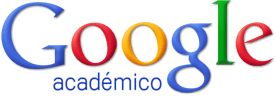Evaluation of techniques accessible productionin massive, online, open course - MOOC
Keywords:
accessibility, inclusive education, educational resource, virtual education, qualitative educationAbstract
Virtual education plays an important role in the improvement of accessibility, relevance and quality in education, thanks to the characteristics of the means on which it is based, that reaks time and space barriers, enabling students and teachers to set their interests, rhythms and study sites, among others. This methodology has an impact on the cycle of continuing education (lifelong learning), concept which groups the formal and informal education.However, the implementation of online training strategies is not inclusive by default. The accessible virtual education requires challenges in the design and production of digital virtual environment of learning (user interfaces and contents).According the questions: “The educational resources and teaching medias used in MOOC are friendly to the population disabling condition?”, this article evaluates a range of Colombian MOOC courses, in order to identify and assess the strengths and weaknesses in the accessible Web production from the Web Accessible Initiative, defined by the World Wide Web Consortium - W3C.To do this, an instrument (section type) is applied, that guides the evaluation of educational resources, according to the level A set by the accessibility standard. The instrument proposes the assessment of 27 criteria in total, divided into four principles: perceptibility, operability, understanding and robustness.The chosen courses belong to the ‘Digital Antioquia’, a strategy of Antioquia departmental administration, which seeks to develop ICT skills in teachers of the region. The research sample was defined by convenience, taking into account the type of problem and investigation, the nature of the object and the capacity to collect and analyze data.At the end of the article are presented the highest rating criteria obtained and its justification. Furthermore, the criteria with the lowest score are listed, accompanied by an academic discussion which intend to provide improvement suggestions. This, as a strategy for knowledge management and promotion of a Web for all.
Downloads
References
[2] O. Henao, “La enseñanza virtual en la educación superior”, ICFES, Bogotá, Colombia, pp 30, 2002.
[3] K. Gutiérrez, (2012, agosto 29). Las soluciones a los 5 desafíos más comunes en eLearning. [En línea]. Disponible: http://info.shiftelearning.com/blogshift/bid/213363/Las-soluciones-a-los-5-desaf-os-m-s-comunes-en-eLearning.
[4] A. Torres, “La educación virtual: un nuevo paradigma de la educación superior a distancia”, Reencuentro, ed. 28, pp. 43-54, sept. 2000.
[5] C. Belloch, “Aplicaciones multimedia interactivas: clasificación”, Universidad de Valencia, Valencia, España, jun. 2012.
[6] W3C, (2008, diciembre 11). Web content accessibility guidelines. [En línea]. Disponible: http://www.w3.org/TR/WCAG20
[7] Wagner. D. “Medir y evaluar la alfabetización”, en Alfabetización: construir el futuro, París, Francia, 1998, cap. 4, pp. 91.
[8] R. Nash. (2008). Los tres tipos de analfabetismo. [En línea]. Disponible: http://www.
contra-mundum.org/castellano/nash/Analfabetismo.pdf
[9] M. Solórzano. (2007, septiembre 8). Una mirada a las tendencias actuales del analfabetismo. [En línea]. Disponible: http://www.oei.es/noticias/spip.php?article961
[10] DANE, “Encuesta nacional de calidad de vida - 2014”, DANE, Bogotá, Colombia, Anexo, Mar. 2014.
[11] Presidencia de la República. (2015, junio 3). Presidente Santos anuncia 4.5 billones de pesos para inversión en infraestructura educativa. [En línea]. Disponible: http://wp.presidencia.gov.co/Noticias/2015/Junio/Paginas/20150603_03-Presidente-Santos-anuncia-4-5-billones-de-pesos-para-inversion-en-infraestructura-educativa.aspx
[12] Ministerio de Educación Nacional. (2014, septiembre 19). Planes territoriales de formación docente. [En línea]. Disponible: http://www.mineducacion.gov.co/1621/w3-propertyvalue-48477.html
[13] Ministerio de Educación Nacional. (2015, febrero 5). Presidente lanzó programa de jornada única escolar para Colombia. [En línea]. Disponible: http://www.mineducacion.gov.co/cvn/1665/w3-article-348418.html
[14] Renata. (2014, agosto 27). 40 IES cuentan con programas virtuales a través del proyecto e-Learning que lidera el Ministerio de Educación Nacional. [En línea]. Disponible: https://www.renata.edu.co/index.php/noticias/6746-40-ies-cuentan-con-programas-virtuales-a-traves-del-proyecto-e-learning-que-lidera-el-ministerio-de-educacion-nacional
[15] P. Mendoza y Á. Galvis, “Ambientes virtuales de aprendizaje: una metodología para su creación”, Informática Educativa, vol. 12, núm. 2, pp 300-301, 1999.
[16] P. Kruchten, “Lifelong learning for lifelong employment”, Sounding board, pp. 85 - 87, ago. 2015.
[17] A. McAuley et al. “The MOOC model for digital practice”, University of Prince Edward Island, Charlottetown, Canada, 2010.
[18] Antioquia Digital. (s.f.). Quiénes somos. [En línea]. Disponible: http://www.antioquiadigital.edu.co/lms/contenidos/presentacionad/index.html
[19] OMS. “Resumen: informe mundial sobre la discapacidad”. OMS y Banco Mundial. Valleta. Malta. 2011.
[20] OMS. (2011, junio 9). Más de 1000 millones de personas con discapacidades deben superar a diario obstáculos importantes. [En línea]. Disponible: http://www.who.int/mediacentre/news/releases/2011/disabilities_20110609/es/
[21] OMS. “Resumen: informe mundial sobre la discapacidad”. OMS y Banco Mundial. Valleta. Malta. 2011.
[22] DANE. (s.f.). Discapacidad. [En línea]. Disponible: http://www.dane.gov.co/index.php/poblacion-y-registros-vitales/discapacidad
[23] Ceapat. “Introducción” en Concepto europeo de accesibilidad. Madrid. España. Ministerio de trabajo y asuntos sociales. 1996. pp. 7.
[24] W3C. (2005, septiembre). Introduction to Web Accessibility. [En línea] Disponible: http://www.w3.org/WAI/intro/accessibility.php.
[25] J. Morales. “La producción de recursos educativos y medios didácticos para una educación virtual asequible y accesible” en 65 de la Conferencia Anual del Consejo Internacional de Medios Educativos - ICEM. Medellín, Colombia. 2015.
[26] W3C. (2008, diciembre). Web Content Accessibility Guidelines (WCAG) 2.0. [En línea]. Disponible: http://www.w3.org/TR/WCAG20/[27]
[27] W3C. (2008, diciembre). Info and relationships. [En línea]. Disponible: http://www.w3.org/TR/UNDERSTANDING-WCAG20/content-structure-separation-program-matic.html
[28] W3C. (2008, diciembre). Sensory characteristics. [En línea]. Disponible: http://www.w3.org/TR/UNDERSTANDING-WCAG20/content-structure-separation-understanding.html
[29] N. González et al. “Proyecto Amóvil: propuesta de una metodología para analizar la accesibilidad en dispositivos móviles” en V Congreso Internacional sobre Calidad y Accesibilidad de la Formación Virtual. Guatemala. Guatemala. 2014. pp 102-109.
[30] W3C. (2008, diciembre). Three Flashes or Below Threshold. [En línea]. Disponible: http://www.w3.org/TR/UNDERSTANDING-WCAG20/seizure-does-not-violate.html
[31] W3C. (2008, diciembre). Bypass Blocks. [En línea]. Disponible: http://www.w3.org/TR/UNDERSTANDING-WCAG20/navigation-mechanisms-skip.html
[32] W3C. (2008, diciembre). On Focus. [En línea]. Disponible: http://www.w3.org/TR/UNDERSTANDING-WCAG20/consistent-behavior-receive-focus.html
[33] J. Viera et al. “Análisis de la accesibilidad de un curso online sobre creación de materiales educativos digitales accesibles por revisores con discapacidad visual ” en V Congreso Internacional sobre Calidad y Accesibilidad de la Formación Virtual. Guatemala. 2014. pp 171-178.
[34] W3C. (2008, diciembre). Non-text Content. [En línea]. Disponible: http://www.w3.org/TR/UNDERSTANDING-WCAG20/text-equiv-all.html
[35] W3C. (2008, diciembre). Keyboard. [En línea]. Disponible: http://www.w3.org/TR/UNDERSTANDING-WCAG20/keyboard-operation-keyboard-operable.html
[36] W3School. (s.f.). HTML accesskey Attribute. [En línea]. Disponible: http://www.w3schools.com/tags/att_global_accesskey.asp
[37] W3C. (2008, diciembre). Language of Page. [En línea]. Disponible: http://www.w3.org/TR/UNDERSTANDING-WCAG20/meaning-doc-lang-id.html
[38] MEN. (s.f.) Sistema nacional de información de la educación superior. [En línea]. Disponible en:http://www.mineducacion.gov.co/sistemasdeinformacion/1735/w3-propertyname-2672.html
[39] Asociación e-Learning 2.0 Colombia. Propuesta de metodología para transformar programas presenciales a virtuales o e-Learning. Bucaramanga. Colombia. 2007.











